Texas is a snake lover’s paradise—especially when it comes to water snakes. These slippery, slithering creatures can be found weaving through the state’s diverse wetlands, lakes, and rivers. While they may not always get the spotlight, they play a crucial role in keeping nature in balance.
From the subtle beauty of the banded water snake to the striking markings of the cottonmouth, each species brings its own charm and mystery. Their ability to adapt to various water habitats is nothing short of impressive, and spotting one can be an unforgettable experience.
In this guide, we’re uncovering 18 different water snakes that call Texas home. Whether you’re an experienced wildlife enthusiast or just curious about these fascinating reptiles, you’re in for a treat. Let’s dive into the world of Texas water snakes and discover what makes each one unique!
Diamondback Water Snake
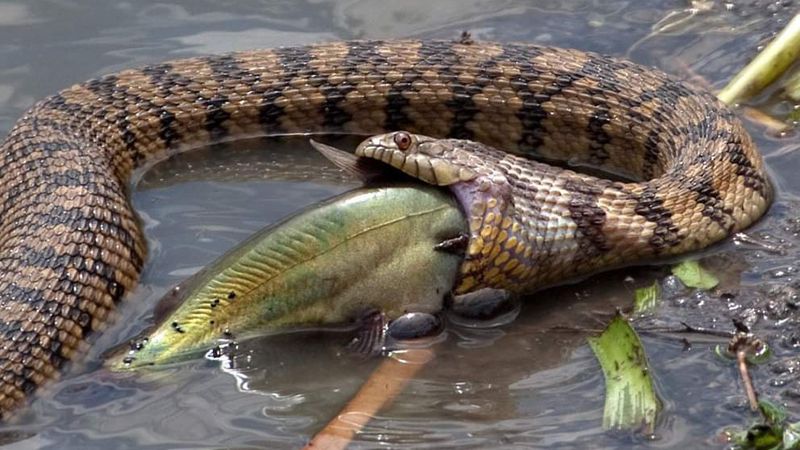
Imagine the Diamondback Water Snake basking on a warm rock by a serene Texas river. This non-venomous reptile is known for its intriguing diamond-shaped patterns running down its back.
Found primarily in slow-moving bodies of water, it feeds on fish and amphibians. Despite its intimidating appearance, this snake is harmless to humans. The Diamondback Water Snake is often mistaken for the venomous cottonmouth due to its defensive behavior and similar habitat.
However, observing its round pupils and slender body can help distinguish between the two. Appreciating this snake’s beauty requires patience and a keen eye.
Broad-banded Water Snake

Gliding through the clear waters of Texas streams, the Broad-banded Water Snake is a sight to behold. Its broad, dark bands contrast vividly against its lighter body, making it easy to identify.
This snake thrives in various aquatic environments, including ponds, swamps, and rivers. Although its appearance may seem foreboding, the Broad-banded Water Snake is non-venomous and generally shy, preferring to escape rather than confront threats.
Its diet consists mainly of fish and frogs. Observing this snake in its natural habitat offers a glimpse into the rich biodiversity of Texas waterways.
Gulf Salt Marsh Snake
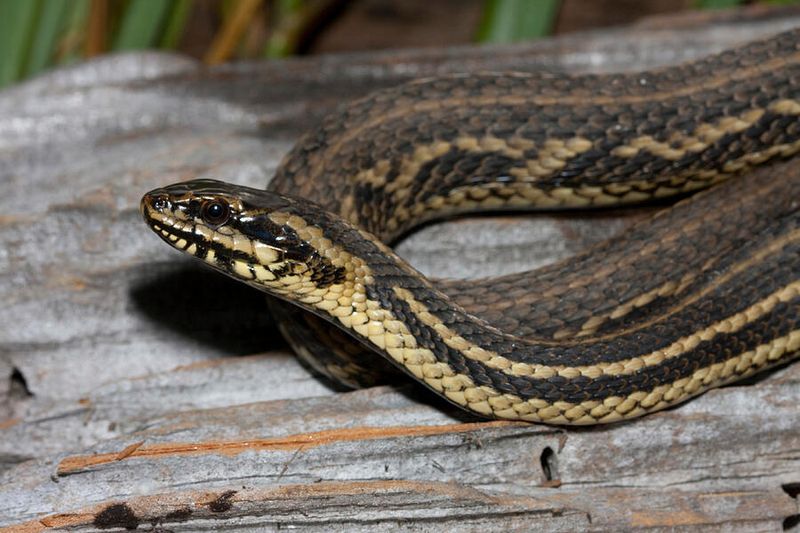
In the sandy marshlands along the Texas coast, the Gulf Salt Marsh Snake slithers with grace and agility. Its scales shimmer in the sunlight, displaying a mix of grays and browns that perfectly camouflage it in its salty habitat.
This non-venomous snake is an opportunistic feeder, consuming fish, frogs, and crustaceans it encounters. Its slender body is well adapted to maneuver through marsh grasses and shallow waters.
While it may look menacing, this snake poses no threat to humans and is a vital part of the coastal ecosystem.
Plain-bellied Water Snake
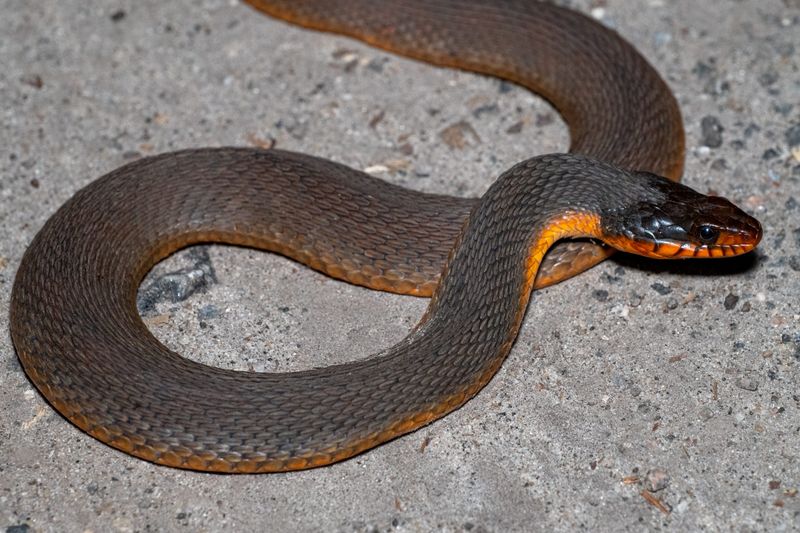
Resting on a sunlit log in a Texas wetland, the Plain-bellied Water Snake displays its characteristic unmarked underside. This adaptable species can be found in a range of aquatic habitats, from rivers to marshes. Its diet includes fish, amphibians, and even small mammals.
Unlike many water snakes, the Plain-bellied Water Snake is a strong swimmer, often seen gliding gracefully across the water’s surface.
Though non-venomous, it can be defensive when threatened, releasing a foul-smelling musk. Its plain belly and vibrant body contrast make it a unique sight in Texas waterways.
Green Water Snake

Amidst the lush vegetation of Texas swamps, the Green Water Snake camouflages effortlessly with its vibrant scales. This non-venomous species is typically found in shallow, vegetated waters, where it hunts for fish and amphibians.
The Green Water Snake’s olive-green coloration allows it to blend seamlessly with its surroundings, making it a challenge to spot. Though it may flatten its body when threatened, this snake is harmless to humans.
Observing its natural behavior offers insight into its role within the swamp ecosystem, as both predator and prey.
Brazos Water Snake
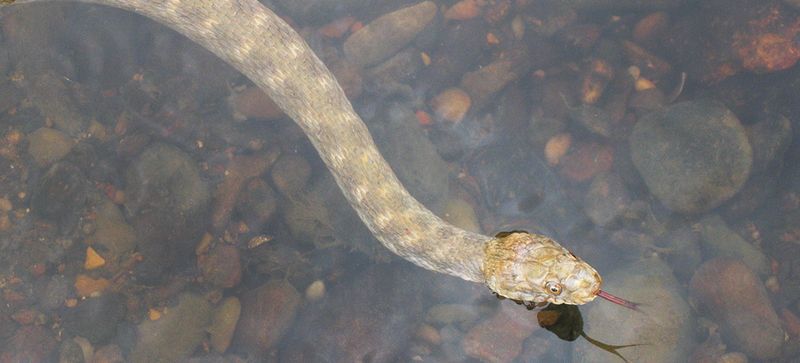
The Brazos Water Snake is a hidden gem among Texas reptiles. Found mostly along the Brazos River, this snake’s reddish-brown coloration allows it to blend seamlessly with the riverbanks. Its shy demeanor makes it a rare sight, but when spotted, it often leaves observers in awe.
With smooth scales and a slender body, this snake is perfectly adapted to its aquatic environment. The Brazos Water Snake primarily feeds on small fish and amphibians and thrives in the calm waters of its riverine habitat.
If you’re hoping to catch a glimpse of this elusive creature, the best time to look is during the warm months when it basks in the sun. Despite its reclusive nature, the Brazos Water Snake plays a vital role in maintaining the ecological balance of its habitat.
Pecos River Mud Snake
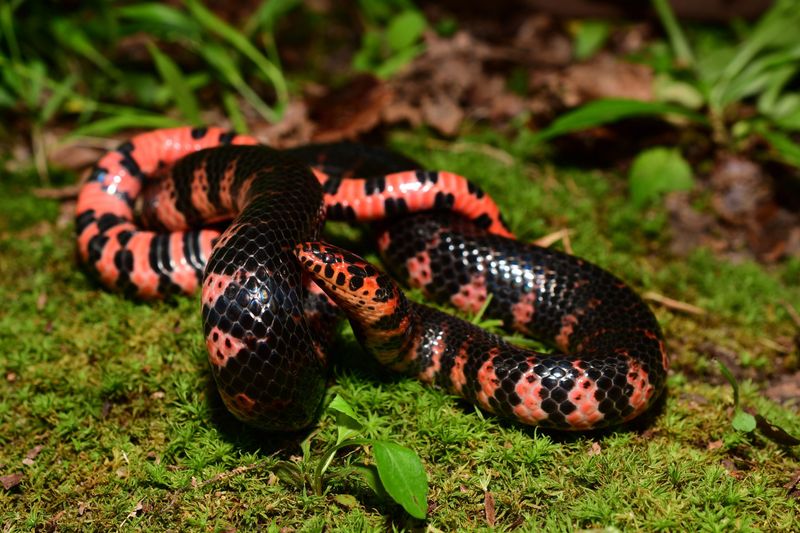
The Pecos River Mud Snake is a resident of the murky waters of the Pecos River, known for its dark, glossy scales that make it almost invisible in its muddy habitat. This snake’s elusive nature adds a layer of mystery to its existence.
Its diet is as murky as its waters, consisting of small fish and invertebrates that it hunts with stealth and precision. The Pecos River Mud Snake is perfectly adapted to its environment, often seen only by those who venture into its hidden world.
Encounters with this snake are rare, making them all the more special for those fortunate enough to observe its presence. The Pecos River Mud Snake stands as a symbol of the hidden treasures within Texas’s waterways.
Northern Water Snake
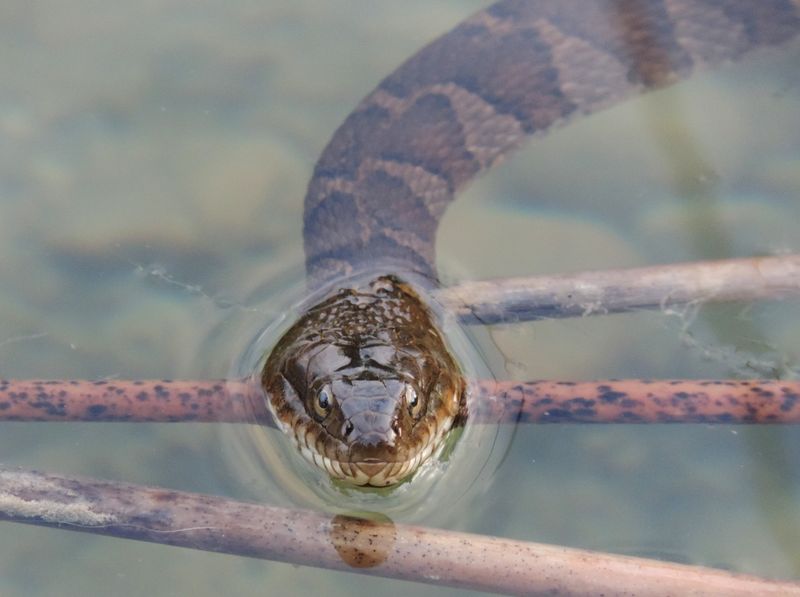
On the sun-dappled banks of Texas rivers, the Northern Water Snake can be seen basking, its scales reflecting the light in a mesmerizing pattern.
This adaptable reptile inhabits a variety of aquatic environments, from rivers to ponds. While it may appear threatening with its bold markings and size, the Northern Water Snake is non-venomous and plays a crucial role in controlling fish and amphibian populations.
Observing its behavior provides a glimpse into the complex interactions within Texas’s aquatic ecosystems, where every creature has a purpose.
Red-bellied Water Snake

With its vibrant red belly, the Red-bellied Water Snake stands out as it coils on a Texas riverbank. This non-venomous species is found in a variety of aquatic habitats, including lakes, rivers, and swamps, where it preys on fish and amphibians.
Its striking coloration serves as a warning to potential predators, though it poses no threat to humans. The Red-bellied Water Snake is an integral part of the local ecosystem, and its presence is a sign of a healthy waterway.
Observing this snake in its natural habitat is a rewarding experience for nature lovers.
Southern Water Snake
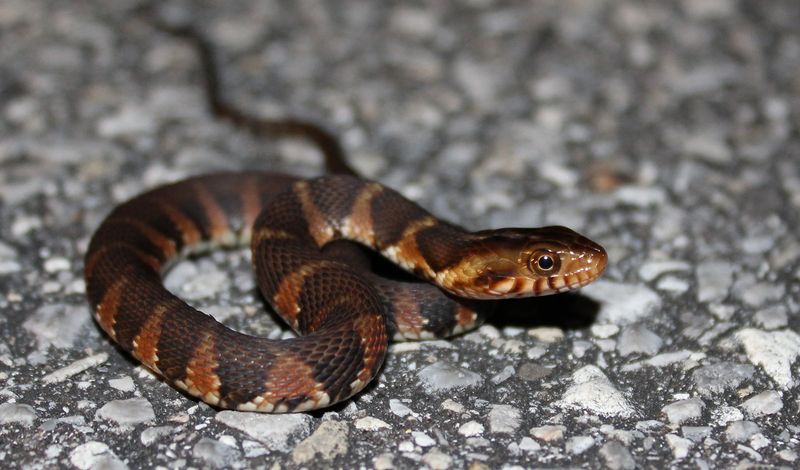
Lurking in the shadows of Texas wetlands, the Southern Water Snake is a master of camouflage. Its dark scales blend seamlessly into the murky waters, making it a challenge to spot.
This non-venomous snake thrives in marshy environments, where it feeds on fish and amphibians. Despite its elusive nature, the Southern Water Snake is an important predator within its ecosystem.
Observing its behavior provides insight into the delicate balance of predator and prey in Texas waterways, highlighting the intricate relationships that sustain life in this unique environment.
Big Thicket Swamp Snake
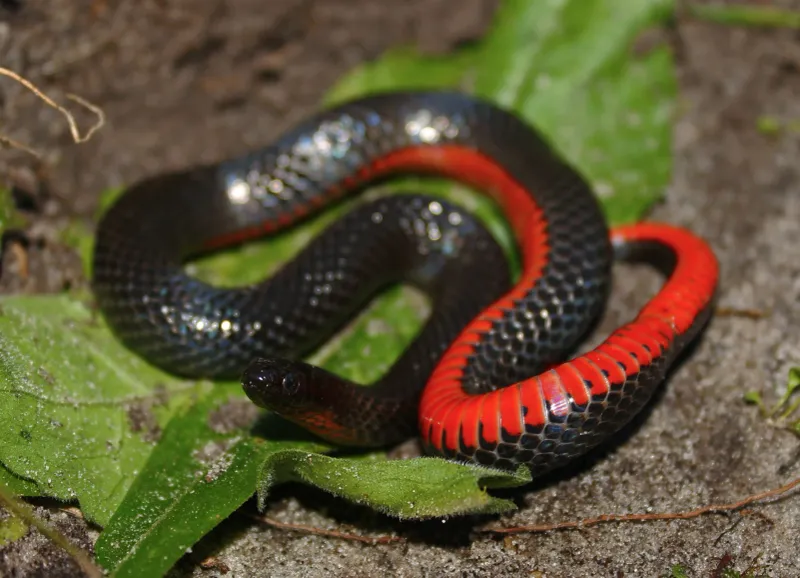
Nestled in the Big Thicket’s dense swamps, the Big Thicket Swamp Snake is a marvel of nature’s artistry. Its skin, adorned with intricate patterns, allows it to blend seamlessly with the moss-covered landscape.
The Big Thicket Swamp Snake is both a predator and a work of art, feeding on small amphibians and fish while showcasing the beauty of its swampy home. Its movements are a graceful dance, a fluid motion through the water that captivates any observer.
For those willing to brave the challenging terrain of the Big Thicket, the chance to see this snake in its natural habitat is an unforgettable experience. It embodies the wild, untamed spirit of the Texas wilderness.
Concho Water Snake

In the crystal-clear waters of Texas rivers, the Concho Water Snake glides effortlessly, its sleek body cutting through the water with precision.
This non-venomous species is unique to Texas and thrives in flowing freshwater environments. The Concho Water Snake’s diet consists mainly of fish and small aquatic creatures.
Though it may seem elusive, this snake plays a critical role in maintaining the balance of the river ecosystem. Observing its agile movements offers insight into the adaptability and resilience of wildlife in Texas’s ever-changing landscape.
Texas Indigo Snake
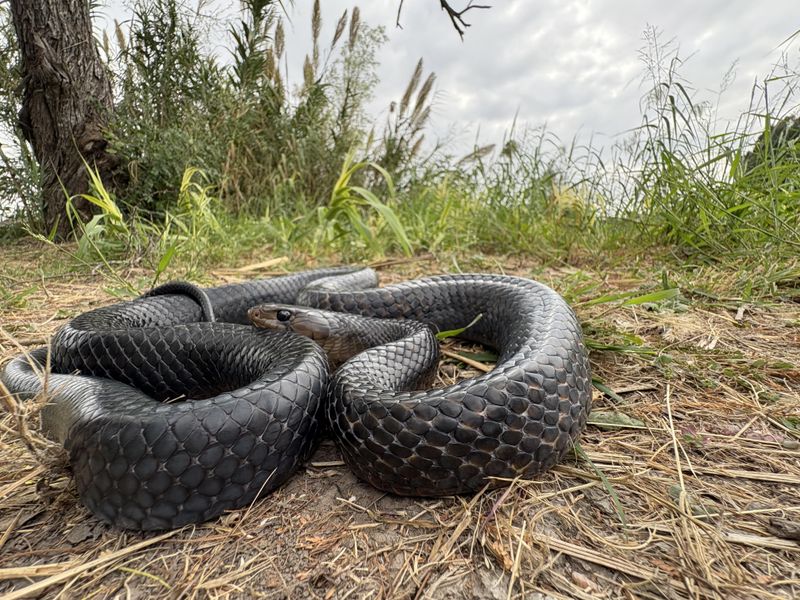
Slithering gracefully through the grass near a Texas waterway, the Texas Indigo Snake captivates with its iridescent scales. While not exclusively a water snake, it is often found near water bodies, where it hunts a variety of prey.
This non-venomous species is known for its striking appearance and powerful presence in the ecosystem. The Texas Indigo Snake’s adaptability and hunting prowess make it an important predator, controlling populations of potential pests.
Observing its behavior is a treat for any nature enthusiast seeking a deeper connection with Texas’s diverse wildlife.
Blotched Water Snake
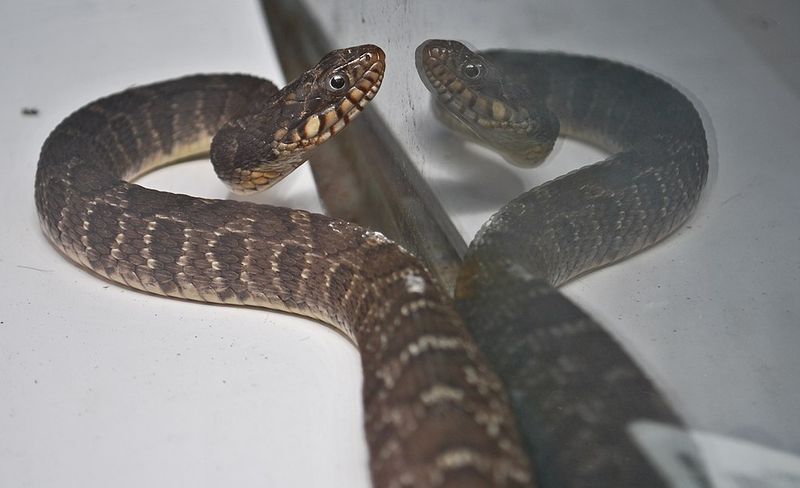
Emerging from the depths of a Texas pond, the Blotched Water Snake reveals its distinctive blotchy pattern. This non-venomous snake thrives in a variety of aquatic environments, including ponds, lakes, and marshes.
Its diet consists mainly of fish and amphibians, and its presence is an indicator of a healthy ecosystem. The Blotched Water Snake’s unique markings serve as camouflage, allowing it to blend seamlessly with the varied textures of its environment.
Observing this snake in its natural habitat provides a glimpse into the intricate web of life in Texas’s waterways.
Ribbon Snake

Darting through the lush greenery near a Texas wetland, the Ribbon Snake is a sight to behold. Its slender body and vivid stripes make it stand out among the foliage.
This non-venomous species prefers wet habitats, where it hunts small fish and amphibians. Unlike other water snakes, the Ribbon Snake is known for its agility on land as well as in water.
Its presence is a testament to the rich biodiversity of Texas’s wetland environments. Observing this snake provides a window into the delicate balance of life in these vibrant ecosystems.
Keelback Water Snake
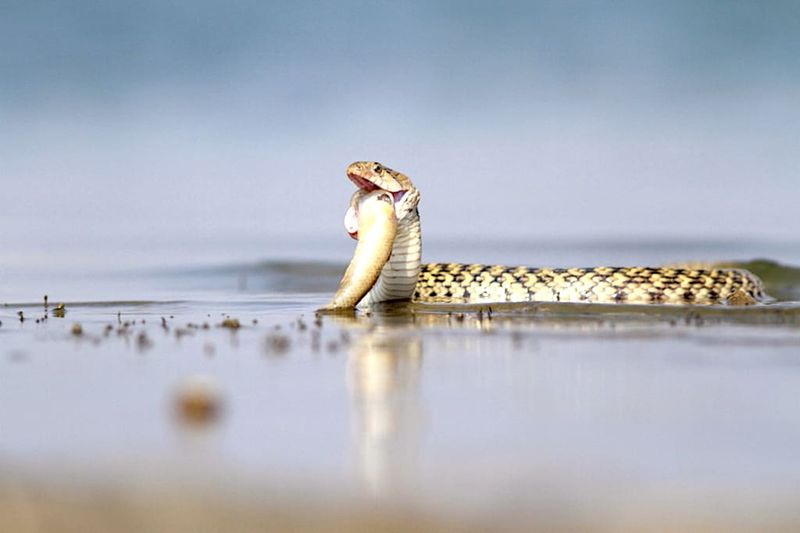
Navigating the marshy waters of a Texas swamp, the Keelback Water Snake is recognized by its distinctive keel-like scales. This non-venomous reptile is well adapted to its aquatic environment, where it preys on fish and amphibians.
Despite its rugged appearance, the Keelback Water Snake is harmless to humans and plays a vital role in controlling insect and fish populations.
Observing its behavior offers insight into the complex interactions within Texas’s swamp ecosystems, highlighting the importance of each species in maintaining ecological balance.
Western Cottonmouth
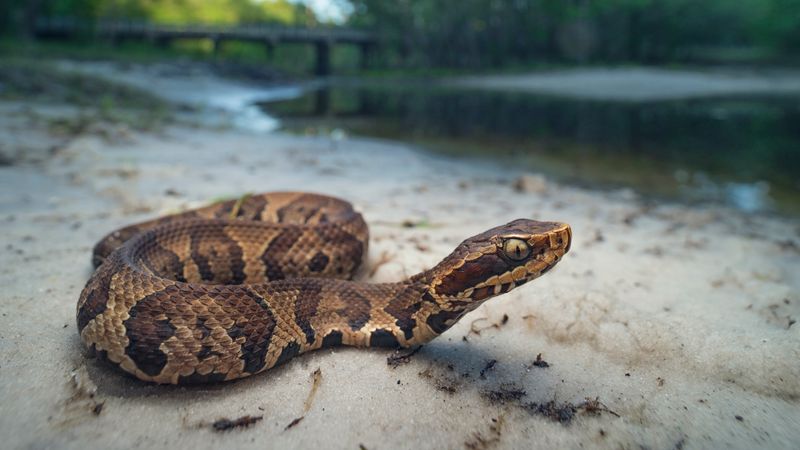
Poised on a Texas riverbank, the Western Cottonmouth commands attention with its slightly open mouth, revealing its characteristic white interior. Unlike the other snakes on this list, the Western Cottonmouth is venomous and should be observed with caution.
Found near water bodies, this snake feeds on fish and amphibians, playing a role in the ecosystem’s predator-prey dynamics.
Its distinctive appearance and behavior make it a subject of fascination for nature enthusiasts, offering a thrilling glimpse into the diverse world of Texas’s aquatic snakes.
Speckled Kingsnake
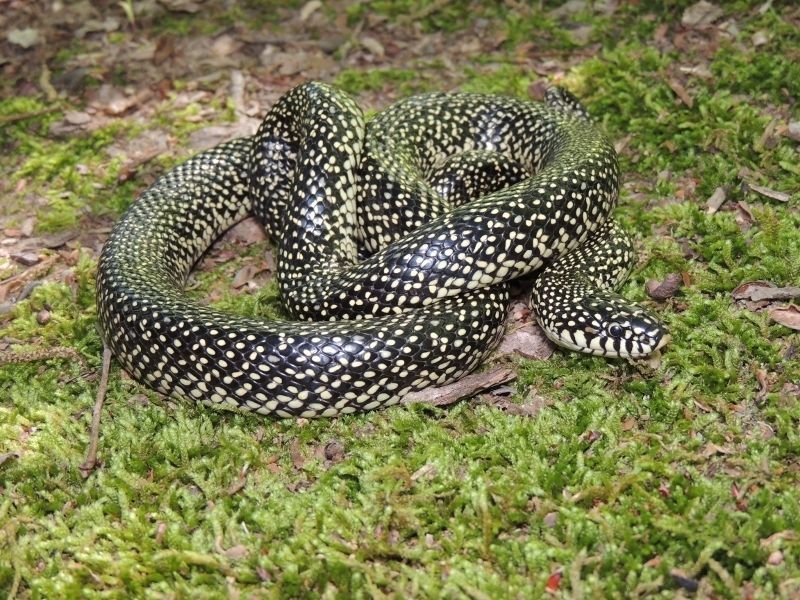
Slithering through the underbrush near a Texas stream, the Speckled Kingsnake is a marvel with its speckled pattern. While not strictly a water snake, it is often found near water, where it hunts a variety of prey, including other snakes.
This non-venomous species is known for its striking appearance and fearlessness in the face of danger. The Speckled Kingsnake’s role as both predator and scavenger makes it an important part of the ecosystem.
Observing its behavior provides a deeper appreciation for the intricate web of life in Texas’s diverse habitats.

